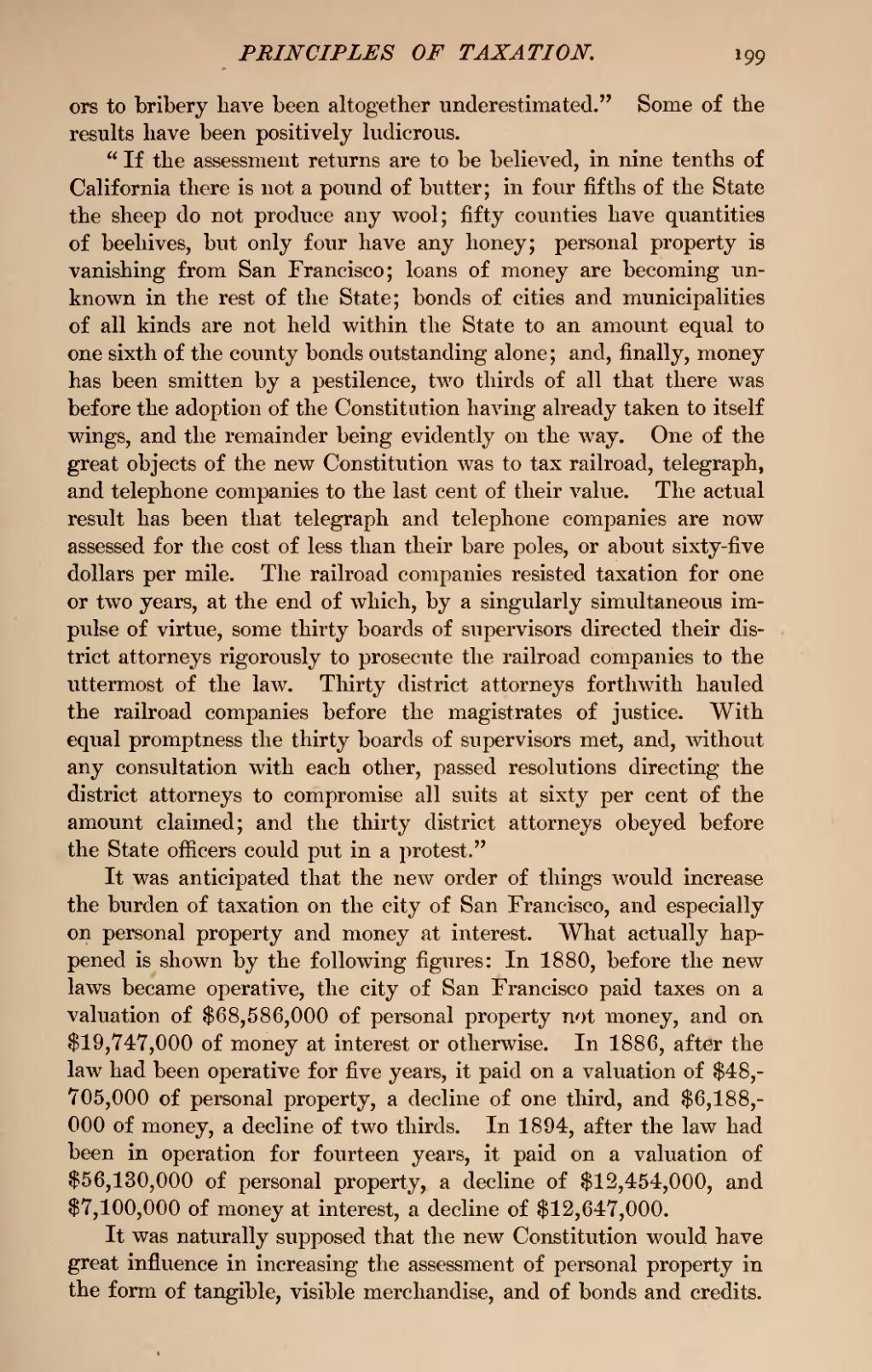ors to bribery have been altogether underestimated." Some of the results have been positively ludicrous.
"If the assessment returns are to be believed, in nine tenths of California there is not a pound of butter; in four fifths of the State the sheep do not produce any wool; fifty counties have quantities of beehives, but only four have any honey; personal property is vanishing from San Francisco; loans of money are becoming unknown in the rest of the State; bonds of cities and municipalities of all kinds are not held within the State to an amount equal to one sixth of the county bonds outstanding alone; and, finally, money has been smitten by a pestilence, two thirds of all that there was before the adoption of the Constitution having already taken to itself wings, and the remainder being evidently on the way. One of the great objects of the new Constitution was to tax railroad, telegraph, and telephone companies to the last cent of their value. The actual result has been that telegraph and telephone companies are now assessed for the cost of less than their bare poles, or about sixty-five dollars per mile. The railroad companies resisted taxation for one or two years, at the end of which, by a singularly simultaneous impulse of virtue, some thirty boards of supervisors directed their district attorneys rigorously to prosecute the railroad companies to the uttermost of the law. Thirty district attorneys forthwith hauled the railroad companies before the magistrates of justice. With equal promptness the thirty boards of supervisors met, and, without any consultation with each other, passed resolutions directing the district attorneys to compromise all suits at sixty per cent of the amount claimed; and the thirty district attorneys obeyed before the State officers could put in a protest."
It was anticipated that the new order of things would increase the burden of taxation on the city of San Francisco, and especially on personal property and money at interest. What actually happened is shown by the following figures: In 1880, before the new laws became operative, the city of San Francisco paid taxes on a valuation of $68,586,000 of personal property not money, and on $19,747,000 of money at interest or otherwise. In 1886, after the law had been operative for five years, it paid on a valuation of $48,705,000 of personal property, a decline of one third, and $6,188,000 of money, a decline of two thirds. In 1894, after the law had been in operation for fourteen years, it paid on a valuation of $56,130,000 of personal property, a decline of $12,454,000, and $7,100,000 of money at interest, a decline of $12,647,000.
It was naturally supposed that the new Constitution would have great influence in increasing the assessment of personal property in the form of tangible, visible merchandise, and of bonds and credits.
